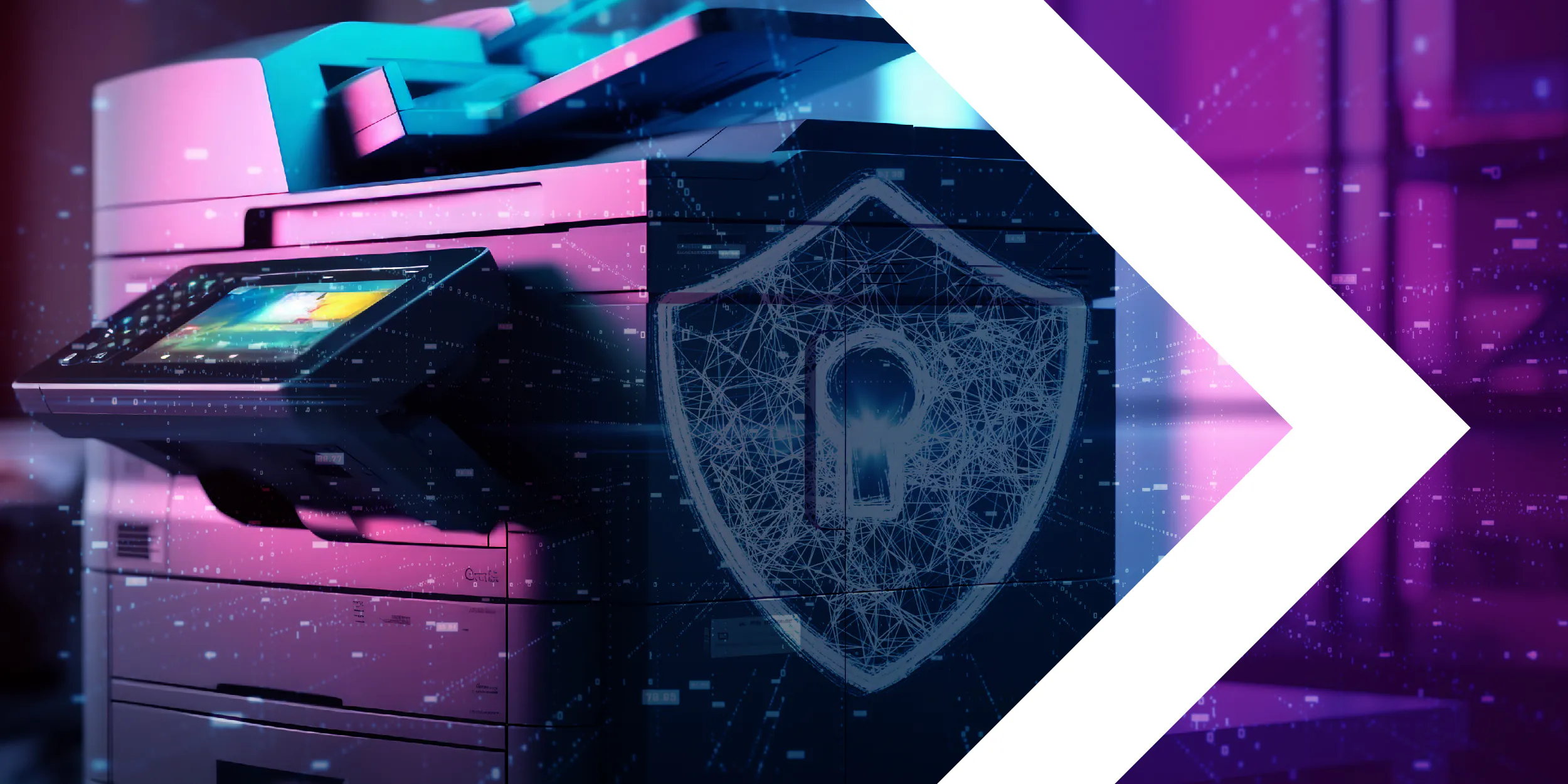As the modern workplace evolves, networked printers have become integral components of enterprise IT infrastructures. However, with increased connectivity comes heightened security risks. Cybercriminals now target these devices as vulnerable entry points into corporate networks, making advanced cybersecurity measures essential.
Why Are Networked Printers a Security Risk?
Printers function as IoT-enabled devices, processing and storing vast amounts of sensitive information. From financial documents to confidential contracts, these devices handle data that, if intercepted, could lead to severe breaches. Unsecured printers pose risks such as:
- Unauthorized Data Access: Hackers exploit unsecured print queues to retrieve sensitive documents.
- Malware Injections: Outdated device software makes printers susceptible to cyberattacks like PrintNightmare.
- Network Exploits: Attackers use printers as gateways to infiltrate broader IT systems.
- Document Theft: Hard copies left in output trays create physical security risks.
Cutting-Edge Security Enhancements for Enterprise Printing
To counteract these risks, leading printer manufacturers and IT security teams have implemented advanced cybersecurity protocols. Here are the latest advancements:
1. Military-Grade Encryption for Data Transmission
Data encryption is fundamental in securing print jobs. Enterprise-grade printers now employ AES-256-bit encryption, the same standard used by military and government agencies, ensuring end-to-end data protection. This prevents unapproved capture of documents in transit.
2. Multi-Factor Authentication (MFA) for User Access
According to recent studies, 89% of enterprise-grade printers now require multi-factor authentication (MFA) for accessing sensitive print jobs. This security layer incorporates:
- Biometric Authentication: Fingerprint and facial recognition to validate user identity.
- RFID Badge Access: Secure badge scanning ensures only authorized personnel retrieve documents.
- PIN Code Verification: Unique access codes add another layer of security for document getting.
3. Real-Time Intrusion Detection Systems (IDS)
Modern print security includes host-based intrusion detection (HIDP) that continuously monitors print activity. These systems:
- Detect anomalous print behaviors, such as unapproved bulk print jobs.
- Quarantine suspicious tasks before completion.
- Alert IT security teams in real time to prevent breaches.
A 2025 Ponemon Institute study revealed that organizations using these enhanced security features experienced 63% fewer data breaches related to print infrastructure.
4. Firmware Whitelisting and Secure Boot Processes
Cybercriminals often exploit outdated or unprotected printer device software. Advanced security measures now include:
- Firmware Whitelisting: Ensuring only authorized, digitally signed device software runs on the device.
- Secure Boot Technology: Restricts the printer from booting up unless all device software is checked.
- Automatic Security Patching: Just-in-time patching (JITP) prevents exploits before they can be weaponized.
5. End-to-End Print Job Security
To secure print jobs from start to finish, companies are using advanced cybersecurity protocols:
- Pull Printing (Secure Print Release): Documents remain encrypted on a secure server until the authorized user releases the job at the printer.
- Secure Print Spoolers: Prevent unauthorized users from stopping pending jobs.
- Encrypted Print Job Storage: Ensures print data is securely erased after the job to reduce leftover issues.
6. AI-Driven Threat Intelligence and Behavioral Biometrics
AI-powered threat intelligence enables proactive security by detecting patterns and signs of a cyberattack. Behavioral biometrics further enhances security by analyzing user interactions, such as:
- Typing Speed and Mouse Movements: Identifying changes from normal user behavior.
- Print Job Frequency Monitoring: Flagging excessive or unusual print requests.
By using AI-based analytics, IT teams can anticipate and prevent breaches before they occur.
Best Practices for Strengthening Print Security
To fully secure linked printing ecosystems, organizations should adopt these best practices for advanced cybersecurity protocols:
- Enable Secure Protocols: Implement SNMPv3, IPPS, and TLS 1.3 for secure printer communication.
- Conduct Regular Security Audits: Assess device software integrity, access controls, and risk management.
- Implement Zero-Trust Architecture: Restrict printer access to checked users only.
- Educate Employees on Print Security: Establish policies to keep out print access.
- Partner with a Trusted Print Security Provider: Ensure your managed print services (MPS) provider offers robust security measures.
Secure Your Printing Infrastructure with Doceo
At Doceo, we understand the critical role print security plays in protecting your business. Our solutions integrate cutting-edge security features, ensuring compliance with industry standards while lowering risks.
Ready to secure your networked printers? Contact us at 888-757-6626 or visit mydoceo.com to learn more.
By prioritizing security within your printing ecosystem, you can safeguard sensitive data, prevent access without permission, and ensure compliance with evolving cybersecurity regulations.


